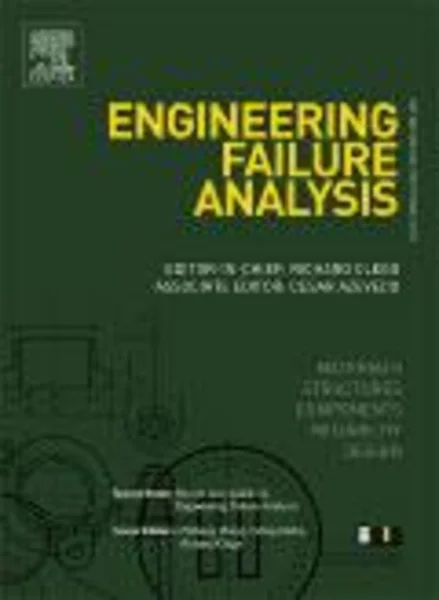-
failure analysis of a carbon steel screw under the service in the presence of hydrogen sulphide
جزئیات بیشتر مقاله- تاریخ ارائه: 1390/01/01
- تاریخ انتشار در تی پی بین: 1390/01/01
- تعداد بازدید: 509
- تعداد پرسش و پاسخ ها: 0
- شماره تماس دبیرخانه رویداد: -
the petroleum industry generally has different processes which bring a wide variety of corrosive environments in contact with structural materials in service. each year, tens of millions of dollars are spent to replace or repair pipes and vessels that suffer excessive localized metal loss, stress corrosion cracking (scc) or hydrogen embrittlement (he). one of the most common failures in the industry would happen due to the brittle fracture known as sulphide stress cracking (ssc) when the surrounding environment contains sulphurous compounds such as hydrogen sulphide (h2s). under a wet h2s atmosphere, steels become susceptible to ssc. under such circumstances atomic hydrogen, resulted from an electrochemical reaction between the metal and the h2s-containing medium enters the steel at the corroding surface. atomic hydrogen, in turn, can partly be absorbed into the steel. in the absence of applied stress, the diffused hydrogen could cause blistering or hydrogen induced cracking (hic) initiated at hard phase constituents and non-metallic inclusions. in the presence of applied and residual stress, the failure process can occur either by sulphide stress corrosion cracking (sscc) through hydrogen embrittlement or stress oriented hydrogen induced cracking (sohic). the latter occurs mainly in lower strength steels, such as api pipeline grades. ssc is a form of hydrogen stress cracking resulting from absorption of atomic hydrogen produced by the sulphide corrosion process on the metal surface. all variables known to influence ssc of iron-based alloys are classified into two major categories: (i) environmental effects that include hydrogen sulphide concentration (or pressure), temperature and applied potential, and (ii) mechanical and metallurgical variables such as alloy composition, microstructure, heat treatment, cold work, hardness or strength level, and surface condition.
مقالات جدیدترین رویدادها
-
استفاده از تحلیل اهمیت-عملکرد در ارائه الگوی مدیریت خلاقیت سازمانی و ارائه راهکار جهت بهبود
-
بررسی تاثیر ارزش وجوه نقد مازاد بر ساختار سرمایه شرکت های پذیرفته شده در بورس اوراق بهادار تهران
-
بررسی تأثیر سطح افشای ریسک بر قرارداد بدهی شرکت های پذیرفته شده در بورس اوراق بهادار تهران
-
بررسی تأثیر رتبه بندی اعتباری مبتنی بر مدل امتیاز بازار نوظهور بر نقد شوندگی سهام با تأکید بر خصوصی سازی شرکت ها
-
تأثیر آمیخته بازاریابی پوشاک ایرانی بر تصویر ذهنی مشتری پوشاک ایرانی (هاکوپیان)
-
ارتقای تعاملات اجتماعی در مجتمع های مسکونی، در جهت افزایش حس تعلق به مکان: ارائه راهکارهای طراحی معماری
-
بررسی تاثیر رنگ در محیط آموزشی برای کودکان مبتلا به اختلالات اوتیسم
-
تاثیر نور در فضاهای امن شهری
-
ژئوشیمی و محیط تکتونیکی لامپروفیرها و آندزی بازالت – بازالت های جنوب – غرب سلماس
-
معماری پایدار با رویکرد بومی سازی و تاثیر اقلیم بر آن (نمونه موردی سیستان)
مقالات جدیدترین ژورنال ها
-
مدیریت و بررسی افسردگی دانش آموزان دختر مقطع متوسطه دوم در دروان کرونا در شهرستان دزفول
-
مدیریت و بررسی خرد سیاسی در اندیشه ی فردوسی در ادب ایران
-
واکاوی و مدیریت توصیفی قلمدان(جاکلیدی)ضریح در موزه آستان قدس رضوی
-
بررسی تاثیر خلاقیت، دانش و انگیزه کارکنان بر پیشنهادات نوآورانه کارکنان ( مورد مطالعه: هتل های 3 و 4 ستاره استان کرمان)
-
بررسی تاثیر کیفیت سیستم های اطلاعاتی بر تصمیم گیری موفق در شرکتهای تولیدی استان اصفهان (مورد مطالعه: مدیران شرکتهای تولیدی استان اصفهان)
-
اثربخشی روایت درمانی بر خودکارآمدی ادراک شده دانش آموزان دختر مبتلا به چاقی
-
انتشار تصاویر کودکان در فضای مجازی و تأثیر آن بر شخصیت سازی پیش از بلوغ ایشان، در پرتو حقوق ایران و مقررات بین المللی
-
واکاوی اسقاط خیار غَبن و تأثیر آن در سقوط میزان غَبن فاحش و اَفحَش
-
داوری در طلاق
-
sociological study of social problems of afghan refugees in yasooj city in 2015




سوال خود را در مورد این مقاله مطرح نمایید :